 Vietnam, officially the Socialist Republic of Vietnam is the easternmost country on the Indochina Peninsula in Southeast Asia. It is bordered by People's Republic of China (PRC) to the north, Laos to the northwest, Cambodia to the southwest, and the South China Sea, referred to as East Sea to the east. With a population of over 86 million, Vietnam is the 13th most populous country in the world.
Vietnam, officially the Socialist Republic of Vietnam is the easternmost country on the Indochina Peninsula in Southeast Asia. It is bordered by People's Republic of China (PRC) to the north, Laos to the northwest, Cambodia to the southwest, and the South China Sea, referred to as East Sea to the east. With a population of over 86 million, Vietnam is the 13th most populous country in the world.
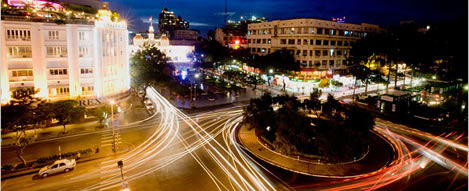
Ho Chi Minh City (Saigon) is the largest city in Vietnam. It was once known as Prey Nokor, an important Khmer seaport prior to annexation by the Vietnamese in the 17th century.
Under the name Saigon it was the capital of the French colony of Cochinchina and later of the independent state of South Vietnam from 1955 to 1975. In 1976, Saigon merged with the surrounding province of Gia Định and was officially renamed Hồ Chí Minh City.
The city center is situated on the banks of the Saigon River, 60 kilometers (37 mi) from the South China Sea and 1,760 kilometers (1,094 mi) south of Hanoi, the capital of Vietnam.
The metropolitan area, which consists of the Hồ Chí Minh City metropolitan area, Thủ Dầu Một, Dĩ An, Biên Hòa and surrounding towns, is populated by more than 9 million people, making it the most populous metropolitan area in Vietnam and the countries of the former French Indochina. The Greater Ho Chi Minh City Metropolitan Area, a metropolitan area covering most parts of Đông Nam Bộ plus Tiền Giang and Long An provinces under planning will have an area of 30,000 square kilometers with a population of 20 million inhabitants by 2020.

Capital city: Hanoi
Official language: Vietnamese
VISA: Needed - for more information click HERE
Currency: đồng (₫) (VND)
Exchange rate: Click Here
Time zone: UTC+7 (UTC+7)
- Summer (DST) No DST (UTC+7)
Drives: on the right
Calling code: 84
MAP of Ho Chi Minh City - Click Here
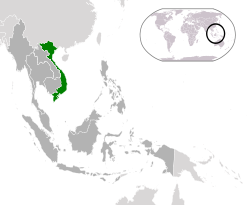
Climate: The average annual temperature is generally higher in the plains than in the mountains and plateaus and in the south than in the north. Temperatures in the southern plains (Ho Chi Minh City and the Mekong Delta) varies less, going between 21 and 28 °C (69.8 and 82.4 °F) over the course of a year. The seasons in the mountains and plateaus and in the north are much more dramatic, and temperatures may vary from 5 °C (41 °F) in December and January to 37 °C (98.6 °F) in July and August.
More information about Vietnam HERE
More information about Ho Chi Minh City HERE
ATTRACTIONS:
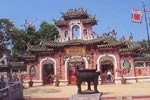 Vietnam is the proud recipient of three World Heritage Site cultural awards: 1) the Imperial City of Hue; 2) Hoi, an ancient town trade center; and, 3) My Son holy land. Other cultural attractions include the capital city of Hanoi, dubbed the “Pearl of the Far East” Ho Chi Minh City, the town of Sapa, the village of Mai Chau, and many others.
Vietnam is the proud recipient of three World Heritage Site cultural awards: 1) the Imperial City of Hue; 2) Hoi, an ancient town trade center; and, 3) My Son holy land. Other cultural attractions include the capital city of Hanoi, dubbed the “Pearl of the Far East” Ho Chi Minh City, the town of Sapa, the village of Mai Chau, and many others.
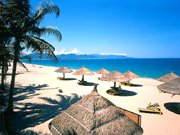 Vietnam's attractions also come from its landscape with virgin beaches and islands from 3260km long coastline, unspoiled mountains and forests, hundreds of beautiful lakes, rivers, waterfalls, and many unforgettable caves. Vietnam has a long coastline that extends along the eastern boundary of the country and wraps around the southern tip for 3,260 km, features endless stretches of empty, white sand beaches. The most famous is World heritage Halong bay, with thousands of islands and rocks of different sizes and shapes.
Vietnam's attractions also come from its landscape with virgin beaches and islands from 3260km long coastline, unspoiled mountains and forests, hundreds of beautiful lakes, rivers, waterfalls, and many unforgettable caves. Vietnam has a long coastline that extends along the eastern boundary of the country and wraps around the southern tip for 3,260 km, features endless stretches of empty, white sand beaches. The most famous is World heritage Halong bay, with thousands of islands and rocks of different sizes and shapes.
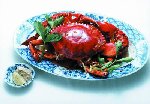 Have you ever tried Vietnam's famous dishes ''Nem' (spring rolls) and 'Pho' (soup) ? Traveling here will allow you sample the extraordinary and exotic tastes of Vietnamese cuisines, as well as freshly caught sea food and an abundance of tropical fruits.
Have you ever tried Vietnam's famous dishes ''Nem' (spring rolls) and 'Pho' (soup) ? Traveling here will allow you sample the extraordinary and exotic tastes of Vietnamese cuisines, as well as freshly caught sea food and an abundance of tropical fruits.
More attractions - Click Here